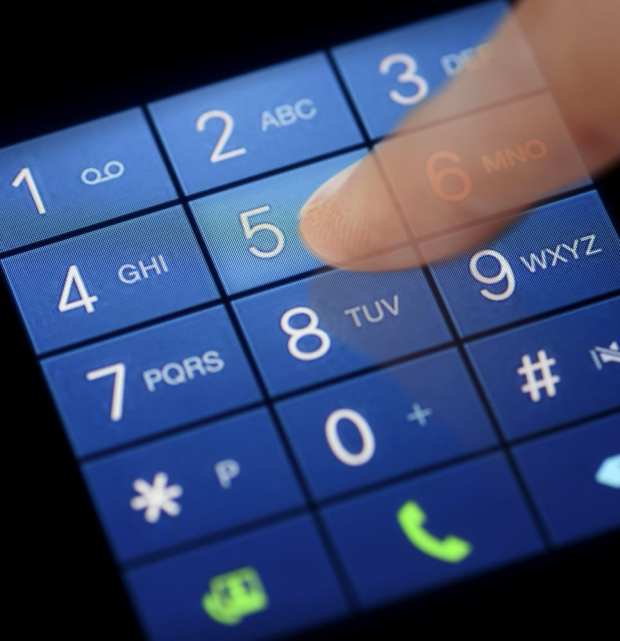Identity Verification By The (Phone) Numbers

Cognito CEO Alain Meier and his colleagues at the identify verification service have a peculiar way of freaking out payment and commerce operators.
The trick?
Simply showing what the lowly, mundane, terribly average phone number can do in terms of securing transactions, onboarding and other tasks vital to the daily lives of digital consumers.
In this rising age of biometrics, in this era of machine learning, in this dawn of artificial intelligence, it turns out a person’s phone number, at least in Meier’s telling, can serve as a reliable path toward frictionless, secure interaction between consumers and banks, payment service providers and other organizations. In a new PYMNTS interview, Karen Webster and Meier talked about the power of the phone number and the role it can play as companies and consumers put more focus on ID verification.
Verification Trends
In case you’ve not noticed – and being PYMNTS readers, you no doubt have – ID verification and authentication is gaining attention, focus, investment and use in digital payments and retail.
One can certainly argue that a good many consumers have become numb to the prospect of data breaches, and continue to use “free” online services despite growing misgivings about the data trade-off that makes those services possible. Even so, no company that actually wants to survive and thrive can afford to let down its guard when it comes to fraud, money laundering and other dangers that can pose existential threats to sustainability and profit.
Enter the phone number – which, as Meier told Webster, is possessed by more than 95 percent of people in the U.S. and a large and growing segment of consumers around the world. It’s a simple, familiar credential that people have relatively little problem sharing in public – at least compared to other personal data – and which ties that person to a host of verifying documentation, including addresses, dates of birth and Social Security numbers.
“People are freaked out quite frequently” when shown how much phone numbers tie into, Meier said, and how they can be used during onboarding or other tasks that call for tight authentication without too much hassle and friction. A consumer would receive an SMS text to verify the phone number.
API Road
The road to verification via phone number, in Cognito’s case, started with the development of “very easy-to-use APIs for the ID verification space.” But a variety of factors, including the slow pace of the sales process, led to tweaks of that vision, resulting in a company whose API now focuses on phone numbers, and which is designed to verify the legitimacy of customer data to reduce fraud and to comply with Know Your Customer (KYC) and anti-money laundering (AML) regulations.
Part of the reason for the focus on the phone number came from the understanding that with biometrics – which is taking on increasing responsibility for verification and authentication – an outside firm was unlikely to be able to “tap into the underlying footprint of that technology,” Meier said. “Apple does not let you access the Face ID footprint to verify people.” Not only that, but biometrics involves specific, often relatively expensive hardware and readers, and are, in Meier’s words, “not revocable.”
Treasure Trove
When it comes to phone numbers, though, not only does virtually every person have one, but those numbers open the door to a “treasure trove of information available to probabilistically link” to other forms of personal data that can then be used to verify the person trying to open a bank or credit card account – or even join a social network restricted to members of a certain neighborhood. “If you put some extra TLC into phone numbers,” Meier said, “you can have greater magnitude and a more powerful solution.”
Phone number verification can be used, according to Meier, “for all the traditional (ways) people use ID verification, and it also expands to other use cases.” For instance, he said the company works with a “credit card provider helping to increase the anonymity of transactions for users.” As one can imagine, such a business attracts a good deal of fraudsters, but using phone numbers as an ID verification method not only can reduce friction for legitimate customers, but can also help the credit card provider detect instances of criminals seeking to open accounts.
Match Rates
That’s not to say any verification method is perfect. Phones get stolen. Phone numbers are misused. But to describe the goal of such work in 2019, Meier used an analogy that would seem familiar to other ID verification service providers: Fraudsters are lions, and businesses are gazelles. Fraudsters target the “slowest gazelles,” and the idea is to not be that creature.
As Meier told it, the match rate for the phone number verification API is around 70 percent to 80 percent. The rate depends on a company’s user base – more immigrants, or a large number of consumers who don’t do much on their phones, or a high instance of fraud all tend to drive down those match rates.
“We are going after high-growth companies that don’t want to have high friction,” he noted. That can take some benign trickery, given the general skepticism that he and his colleagues often encounter among executives who don’t think the simple phone number can so do much.
As Meier told Webster, sometimes Cognito’s customers will “add a fake loading bar” to give end users the impression the technology is doing harder work in the background than is really the case – think, perhaps, of how elevator or crosswalk buttons give people a sense of control and assurance, but sometimes don’t do anything at all.
ID verification and authentication will keep advancing, with new experiments and deployments coming at a quick pace. Phone numbers, it turns out, could play a role in this complex digital world.
